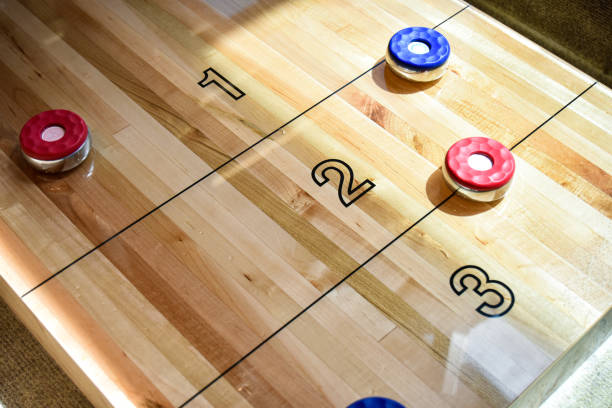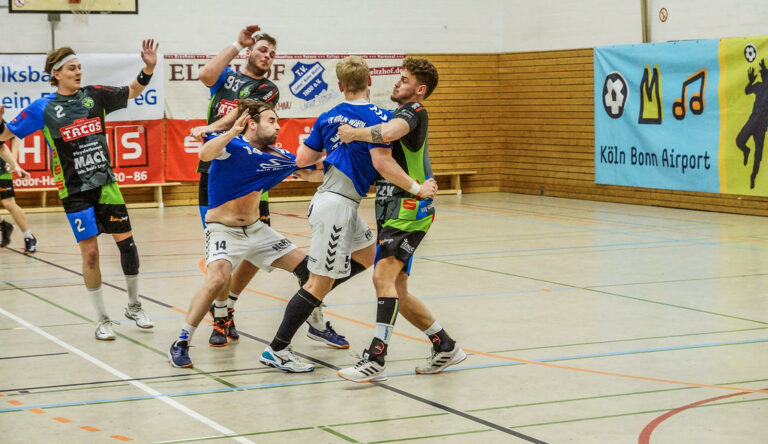General Rules of Roller Derby
If you've ever found yourself intrigued by the dynamic and fast-paced sport of roller derby, understanding the general rules is essential for a deeper understanding of the game. From the required equipment and gear to the strategic gameplay involving jammers and blockers, each aspect contributes to the exhilarating experience on the track. As you explore the intricacies of penalties, pack engagement, and scoring, a thorough grasp of these foundational rules will certainly enhance your appreciation of the sport's intensity and skill.
Equipment and Gear
When gearing up for roller derby, make sure you have the necessary equipment and gear to stay safe and perform at your best. Gear requirements are essential in roller derby to make sure both your safety and the safety of others on the track. The key gear includes a helmet, mouthguard, wrist guards, elbow pads, and knee pads. These items are vital for protecting your head, teeth, wrists, and joints during the intense gameplay of roller derby.
Safety precautions are paramount in roller derby to prevent injuries and maintain a secure environment for all participants. Before each bout or practice, it's important to check your gear for any signs of wear and tear. Make sure that your helmet fits properly and is securely fastened. Your mouthguard should be in good condition to protect your teeth from potential impacts. Wrist guards, elbow pads, and knee pads should be snug yet comfortable to provide the necessary cushioning and support.
Game Format and Duration
When it comes to roller derby, understanding the game structure and time limits is vital for a successful match. The points system in roller derby is based on strategic gameplay and skillful execution of scoring opportunities. By grasping the intricacies of how points are earned and lost, you can elevate your performance on the track and contribute to your team's success.
Game Structure
Typically, roller derby games follow a structured format with specific rules and durations in place. During a roller derby match, teams compete in two periods, each consisting of multiple jams. Jams are brief periods where points can be scored, and they end either after two minutes or when the lead jammer decides to call it off. Teams consist of up to five skaters each, including a jammer who scores points, blockers who play offense and defense simultaneously, and a pivot who can take over as the jammer. The table below outlines the basic roles and strategies employed by each skater position:
| Position | Role |
|---|---|
| Jammer | Scores points for the team |
| Blockers | Employ both offensive and defensive tactics |
| Pivot | Can become the jammer during a jam |
Time Limits
In roller derby games, the time limits for the game format and duration are essential for maintaining the structure and pace of the match. Strategy development is essential within these time constraints as teams must adapt and evolve their tactics throughout the game. Effective team communication becomes even more important when time is limited, ensuring that all players are on the same page and can quickly adjust their strategies. By adhering to the specified time limits, teams are challenged to make split-second decisions, enhancing the excitement and intensity of the game. Players must work together efficiently, utilizing every moment to outmaneuver their opponents and secure victory. Time limits in roller derby not only shape the gameplay but also promote strategic thinking and teamwork under pressure.
Jammer and Blockers
Now let's talk about the POINTS in roller derby. As a jammer, your main objective is to score points by passing opposing blockers. Blockers, on the other hand, work to prevent the opposing jammer from scoring while assisting their own jammer.
Roles in Gameplay
When stepping into the fast-paced world of roller derby, understanding the distinct roles of the Jammer and Blockers is important to maneuvering the gameplay effectively. Jammers are the point scorers of the team, aiming to pass through the pack of blockers to earn points by lapping opponents. Blockers, on the other hand, focus on defense and offense simultaneously, creating walls to block the opposing Jammer while assisting their own. Effective teamwork and communication are crucial for both positions. Blockers must work together to create strong defensive formations and offensive openings for their Jammer. Jammers rely on their blockers to clear paths and provide strategic support. Mastering these player positions and strategies through teamwork is key to success in roller derby.
Scoring and Defense
Understanding the dynamics of scoring and defense in roller derby, particularly the roles of the Jammer and Blockers, is essential for strategic gameplay. Here are some key points to ponder:
- Offensive strategies: Jammers aim to score points by lapping opposing players. Blockers can assist their jammer by creating openings in the opposing team's defense.
- Defensive tactics: Blockers work to prevent the opposing jammer from scoring by using effective blocking techniques like shoulder checks and hip bumps.
- Point scoring: Jammers earn points by passing opposing blockers legally. Each opponent they pass earns them a point.
- Blocking techniques: Blockers employ various techniques such as walls, sweeps, and traps to impede the progress of the opposing jammer.
Penalties and Fouls
Moving through the fast-paced action of roller derby, skaters must be aware of the various penalties and fouls that can be incurred during gameplay. Understanding penalty types and their consequences, as well as foul assessments and challenges, is crucial for maintaining fair play and sportsmanship.
Penalties and Fouls
Here is a breakdown of common penalties and fouls in roller derby:
| Penalty/Foul | Description | Consequences |
|---|---|---|
| Back Blocking | Illegal contact from behind | Minor penalty, skater must yield |
| Cutting the Track | Re-entering the track improperly | Major penalty, skater must yield |
| Illegal Blocking | Using forearms, elbows, or hands | Major penalty, skater must yield |
| High Blocking | Contact above the shoulders | Major penalty, skater must yield |
| Direction of Play | Skating in the wrong direction | Minor penalty, skater must yield |
Being mindful of these penalties and fouls will help you navigate the game effectively, ensuring a fun and fair experience for all participants. Remember, penalties and fouls are part of the game, but with knowledge and practice, you can minimize their impact on your performance.
Pack Definition and Engagement
To understand the dynamics of roller derby gameplay, grasp the concept of pack definition and engagement. The pack refers to the largest group of in-play blockers from both teams skating in proximity, usually within 10 feet of each other. Engagement strategies are important for blockers to control the pack and influence the game. Here are some key points to bear in mind:
- Pack Formation: The pack is formed when there are more than one blocker from each team skating within 10 feet of each other. It is essential for blockers to maintain this formation to control the pace of the game and assist their jammers effectively.
- Maintaining Pack Definition: Blockers must work together to stay within proximity of each other. Failure to maintain the pack can result in penalties, disrupting gameplay and strategic advantages.
- Effective Communication: Clear and concise communication among blockers is crucial for successful pack engagement. This includes signaling teammates, coordinating movements, and adjusting strategies as the gameplay evolves.
- Strategic Positioning: Blockers should strategically position themselves within the pack to impede opposing players while assisting their own jammer. Understanding the flow of the game and anticipating opponents' moves are key aspects of effective pack engagement.
Lead Jammer and Scoring
To fully comprehend the strategic aspects of roller derby gameplay, let's now explore the significance of the Lead Jammer and the scoring system. In roller derby, the Lead Jammer is a pivotal position that can dictate the flow of the game. The Lead Jammer is the first jammer to break through the pack legally and establishes control over when to call off the jam. This status provides a strategic advantage as the Lead Jammer can strategically end a jam to prevent the opposing team from scoring points.
Scoring in roller derby occurs when jammers pass opposing blockers legally. Each opponent a jammer passes earns their team a point. The Lead Jammer has the ability to call off the jam at any time by placing their hands on their hips. This move is often used to prevent the opposing jammer from scoring, especially in situations like a Power Jam, where one team's jammer is in the penalty box, giving the other team a significant scoring opportunity.
Defensive walls play a critical role in both assisting their own jammer and impeding the progress of the opposing jammer. By forming a strong defensive wall, blockers can create barriers that force jammers to slow down or take alternative paths, affecting the scoring potential for both teams. Understanding the dynamics of Lead Jammer status and point scoring is essential for any roller derby player looking to excel in the game.
Strategy and Communication
Effective strategy and clear communication are essential components for success in roller derby, ensuring cohesive teamwork and tactical execution on the track. When it comes to strategy and communication in roller derby, here are some key points to keep in mind:
- Effective Communication: Communication among team members is vital during gameplay. Whether it's conveying a plan, calling out for assistance, or providing updates on the game's progress, clear and concise communication is key. Make sure to use hand signals, verbal cues, or predetermined codes to relay messages efficiently during the fast-paced nature of roller derby.
- Strategic Positioning: Strategic positioning on the track can make or break a team's performance. Understanding where to be to block opponents, create scoring opportunities, or support teammates is crucial. Work on your awareness of the track and the positions of both your teammates and opponents to make quick decisions and adapt your strategy as needed.
- Team Coordination: Roller derby is a team sport, and effective strategy relies on seamless coordination among teammates. Practice working together, anticipating each other's moves, and developing strategies that play to each member's strengths. Remember, a well-coordinated team can outmaneuver even the toughest opponents.
- Adaptability: In the fast-paced environment of roller derby, being able to adapt your strategy on the fly is vital. Stay flexible, be open to changing tactics based on the game's progression, and be ready to pivot your approach as needed. Adaptability can be a game-changer in achieving victory on the track.
Frequently Asked Questions
How Do Roller Derby Leagues Determine Their Rankings and Standings?
To determine rankings and standings, roller derby leagues use a ranking system based on point accumulation from games. Your league calculates scores, assesses wins and losses, and factors in opponent strength to determine your team's position.
Are There Any Specific Rules or Guidelines for Team Names and Uniforms in Roller Derby?
When it comes to team names in roller derby, creativity is key! Make sure your name stands out. As for uniforms, design trends can vary from bold colors to intricate patterns. Express yourself on the track!
What Are Some Common Strategies for Effectively Blocking an Opposing Jammer?
To effectively block an opposing jammer in roller derby, focus on creating a solid defensive wall using communication strategies and positioning techniques. Work together like a fortress, moving as one to disrupt their path.
How Do Roller Derby Leagues Handle Disputes or Conflicts Between Teams or Players?
When handling disputes between teams or players, roller derby leagues employ conflict resolution strategies like mediation. Resolving disagreements promotes teamwork and fair play, ensuring a positive environment for everyone involved in the sport.
Are There Any Specific Regulations or Restrictions Related to Sponsorships in Roller Derby?
When it comes to sponsorships in roller derby, there are specific regulations and restrictions in place to guarantee fairness and integrity. These sponsorship guidelines help maintain the spirit of the sport and uphold its values.






